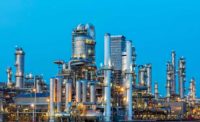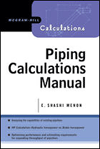10 oil and gas industry questions
Earlier this year, Industrial Info Resources (www.industrialinfo.com) held a 2017 industrial market outlook for Houston (presented live in Houston and via webinar).
The Houston presentation focused on project spending activity and market trends in the U.S. and Canada, with special emphasis on the Southwest and Gulf Coast regions. Topics covered included labor market assessment, power generation, oil and gas, natural gas, petroleum refining and chemical processing.
A post-session question-and-answer segment generated plenty of interest. Here are 10 questions and answers submitted by participants from this informative session.
Compared to today, where do you think the oil and gas market will be by June 2017?
Finally, we have a reason to be optimistic for the gas sector going forward, which has passed the bottom of the cycle and is in a slow upward trend that will likely last for the next couple of years. We expect to see gas processing margins improve to justify in-plant CAPEX projects related to increased utilization, ethane recovery and efficiency improvements.
What are the drivers/trigger point for increasing activity in the upstream and downstream markets?
For the natural gas, and gas liquids sector, the key drivers are growing LNG exports, rising pipeline export demand coming from Mexico and Canada; power sector demand growth; and industrial petrochemical demand growth.
What is the long-term forecast for North American oil and gas prices and what are the projected production and reserve numbers for each?
Henry Hub natural gas spot prices averaged $2.50/MMBtu last year, the lowest levels seen in 20 years. While it is difficult to forecast what the rig count will look like over the next year, one thing is certain: we will likely see gas prices in the mid to upper $3 range by 2018 to meet the increased demand coming our way. With so much of the shale gas reserves economically recoverable in the high $3 range, anytime gas prices above $3 are reached we will see a great deal of drilling activity occur. Proved reserves in the U.S. which currently are more than 300 trillion cubic feet (tcf), will continue to increase as they have nearly every year since 2000. This is more than enough to continue export growth and meet rising industrial and power demand.
What is the outlook for oil and gas production in 2017compared to how it was in 2015-2016?
The additional gas rigs being deployed this quarter are due to a real-step change in demand. LNG exports are now at 1.6Bcf/d and will grow to 9Bcf/d by 2020, and 30 gigawatts (GW) of new power generation that is under construction will add 4.5Bcf/d. Industrial and petrochemical demand -- namely from ammonia and methanol plants- will add 0.8 Bcf/d over the next year. Ethane recovery at gas processing plants will add 1.6 Bcf/d of demand to replace the ethane that is currently rejected and sold as gas. Dry gas production is now expected to return to a record high in 2017, rising to 76 Bcf/d and growing to 89 Bcf/d by 2020.
What is the outlook for midstream, in particular terminals growth, new and M&R dollars?
The midstream buildout slide provides a view of the total investment value by category and construction kick-off year. We have $235 billion in active development with a construction kickoff date next year or beyond, so we have asked our project team to evaluate which projects have a reasonable likelihood of moving forward in the next two-year period. From that exercise we are showing $35 billion next year and more than $50 billion in 2018. Projected supply demand imbalances and permitting may cause a lot of project delays over the next 24 months, but as we look forward we believe we have turned a corner and we have a more positive outlook for next year. We believe there will be at least $25 billion to $30 billion spent on midstream infrastructure investment for each of the next two years with increased spending on gas processing, pipeline and midscale LNG over the previous year. We are cautiously optimistic that in addition to the midscale LNG projects starting construction this year, we will witness the first large LNG trains required for the next wave to start construction by late 2018. In conclusion, the midstream spending outlook is now positive going forward and producer economics will continue to be best in the Permian and SCOOP/STACK plays, Marcellus and the Utica gas regions.
What is the short-term, long-term market outlook?
For the short term as long as the oil price remains steady in the $50s, we should see an uptick in projects moving forward. The long term is harder to predict due to macro economics and political factors.
In which category will major oil and gas companies invest their money in the next five years?
In the short term, the gas midstream side will probably be the most attractive. Looking further ahead, upstream side should see a significant uptick.
What are the key drivers for the oil and gas industry?
An increase in demand from petrochemicals, power generation and exports.
What price does oil need to be per barrel and for how long to allow spending to increase?
There is not an easy answer to this. Should the price of crude remain in the mid $50s per barrel throughout 2017, then we should see an increase in activity. However, for offshore, until we hit $65 per barrel we will not see a substantial increase.
What industry trends and growth opportunities do you see for those operating in the oil and gas industry and those servicing the oil and gas industry?
The oil and gas industry is still in the mode of cutting cost and the service companies are being asked to follow suit. Those service companies that can show efficiency gains are generally coming out as winners.




